Bison Harvest
The Blackfeet are rebuilding food security and traditional knowledge through their blossoming bison program
By Hunter D'Antuono
On the edge of a wintry cottonwood stand near the banks of Two Medicine River, Rusty Tatsey, a Blackfeet elder, makes the spiritual preparations for a bison harvest.
He spreads out ceremonial items on a green tablecloth and smudges the dozen bystanders gathered for the event with sage, cedar and sweetgrass. Purifying smoke also washes over the tools of the harvest: two rifles, a reciprocating saw and an assortment of knives. Tatsey calls upon the energies and the grandfathers of the four cardinal directions in his native language, a small drum in his hand. The assembled men draw from a long pipe before Tatsey instructs everyone to take a pinch of tobacco in their frosty fingers and make an offering to the Earth.
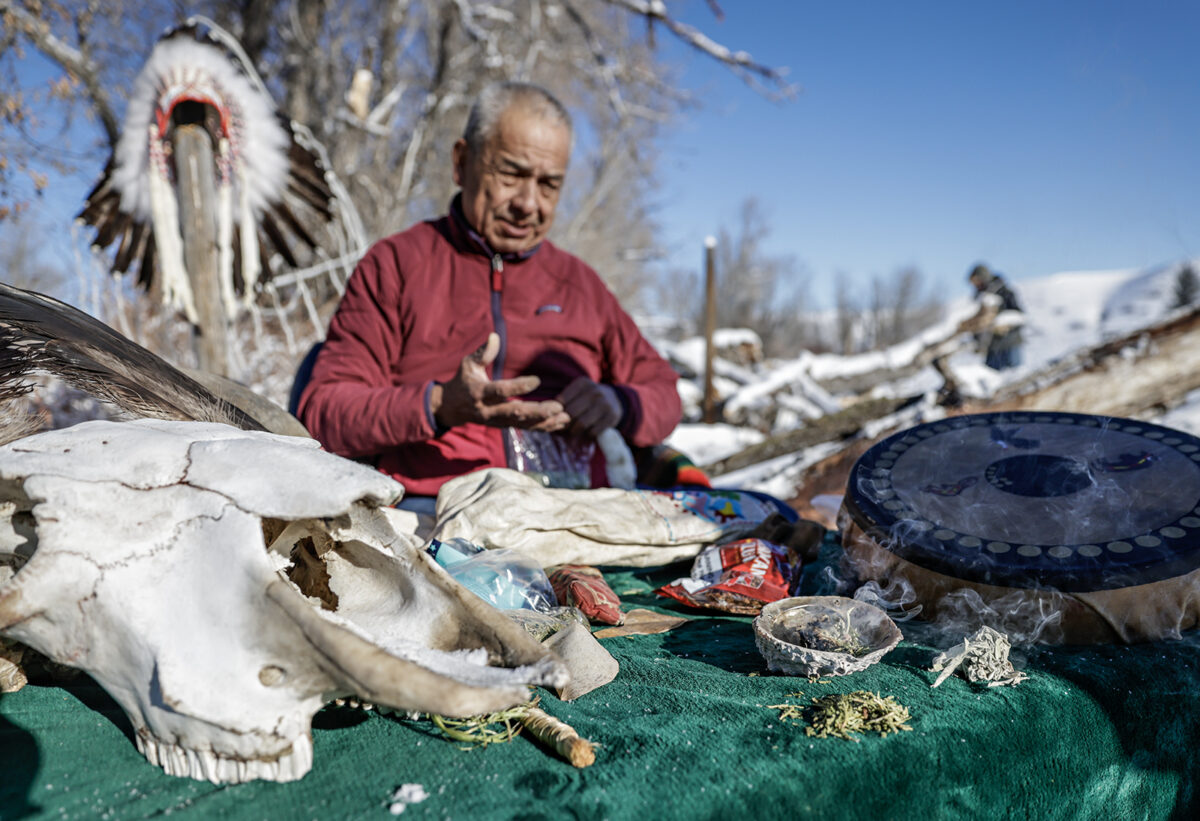
The thermometer reads about zero, but the sun blazes bright in a blue sky over the prairie, coupled with a merciful absence of wind.
At the conclusion of the ceremony, bison caretakers Adrian Costel and Joe LaPlant grab a brunch donut, climb into their trucks and motor over the ridge, where the herd is gathered to feed on supplemental hay to help them through the austere winter months on the Rocky Mountain Front.
The pair take their time, creeping through the herd in search of the most suitable animals for culling. The frigid ground squeaks under-tire when Costel rolls to a stop. He slides out of the cab and takes aim.
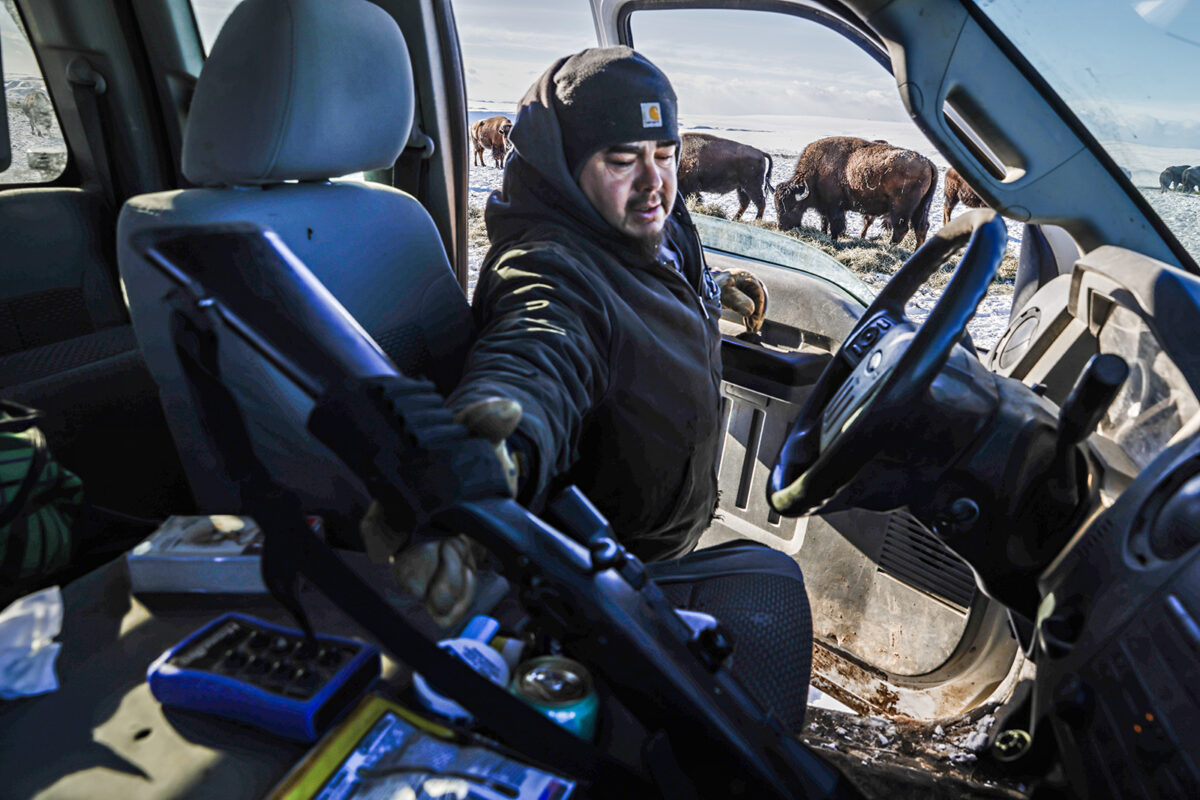
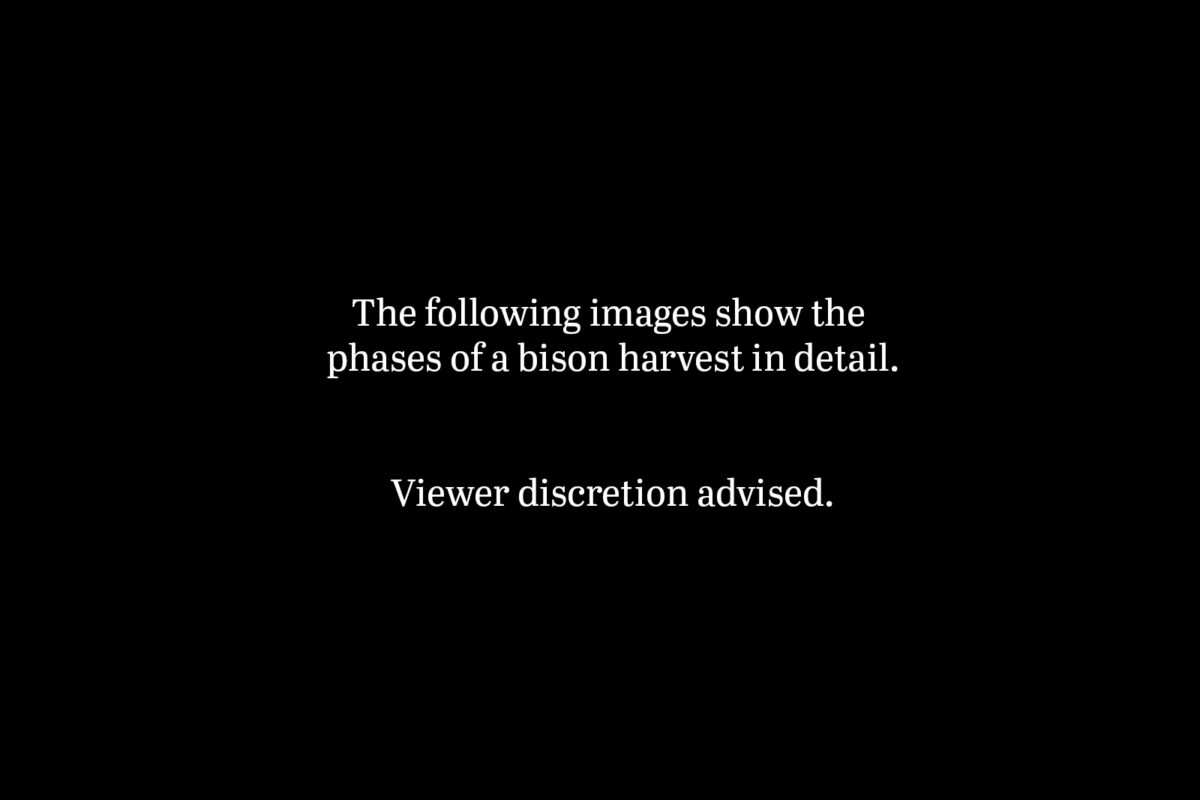
The shot rips the silence of the snowy plain asunder, followed by the dull thud of a bull’s dense, shuddering body meeting the ground. LaPlant repeats the process with a cow. After the bison take their parting breaths, Costel and LaPlant sprinkle a tobacco offering over each and offer a prayer.
Then, they remove the animals’ heads and transport their remains down the hill to the cottonwood stand for the lesson in butchering, led by Termaine Edmo, Climate Change Coordinator for the Blackfeet Nation.
On the surface, a bison harvest in the 21st century is indisputably different from the time of the Blackfeet ancestors. Guns, steel blades, corrals and trucks have supplanted bows, obsidian daggers, buffalo jumps and horses.
But the essence of the practice remains unchanged. Edmo summates the tribe’s relationship with the bison herd as one of thoughtful reciprocity.
“You take care of me and mine, and I’ll take care of you and yours,” Edmo says.
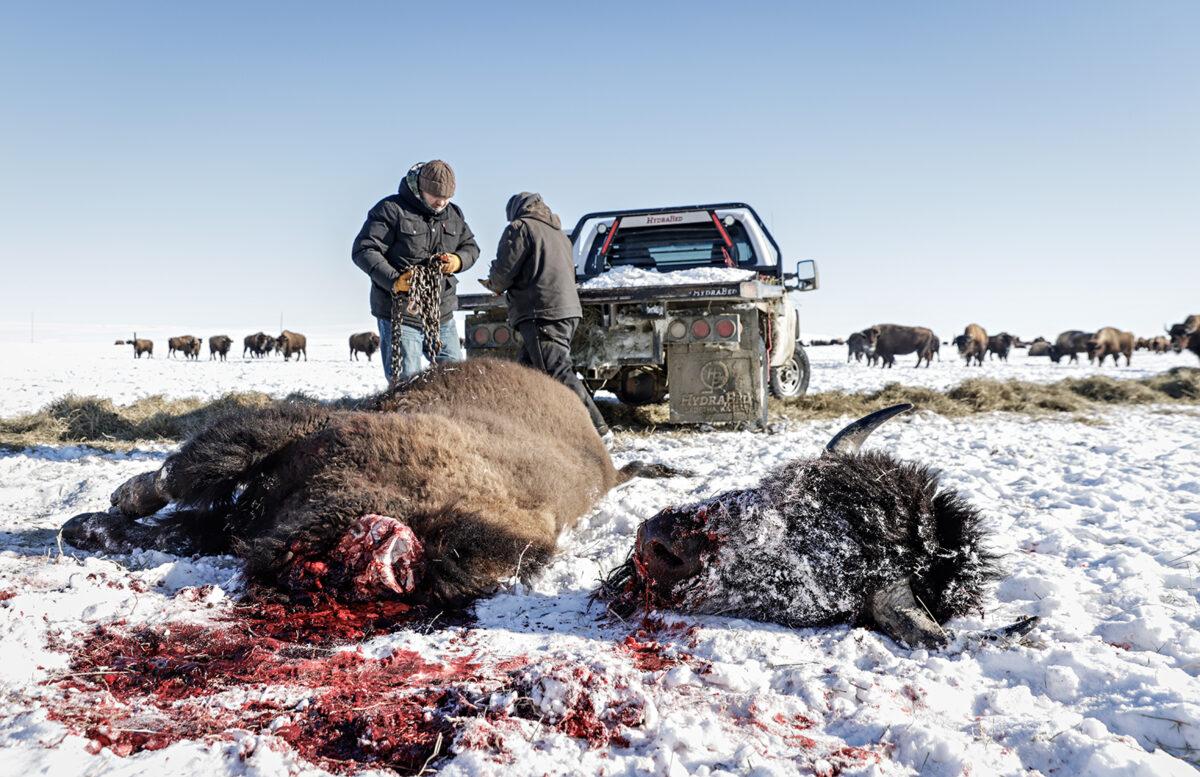

The single-digit temperatures prove valuable for instruction. No need to hustle through the process: the cold staves off any meat spoilage.
Edmo’s generation is an anomaly relative to the course of thousands of years of tribal history and tradition in that she did not grow up butchering bison, but rather domesticated cattle. With the success of the Blackfeet Bison Program, however, between 600 and 800 head of ungulates of a wilder variety are now reforming the foundation of food security for the tribe. Not to mention the tribe’s ongoing project to repopulate their homeland with wild free-roaming bison, which they may soon hunt again, as they did before westward European expansion brought the keystone species to the brink of extinction in the 19th century.
FAST Blackfeet (Food Access and Sustainability Team) partners with the Blackfeet Tribal Bison Program to keep FAST’s community food pantry filled with meat. Marissa Bremner, Growing Health Manager of FAST, says the agency provides hundreds of local families with food each week, in addition to offering cooking education.
As is custom, nothing from a harvest is left to waste. The organs will either be consumed or saved for ceremonial purposes, with the kidneys, heart, liver, stomach and tongue being particularity prized. The hides and skulls are raffled to fundraise for the harvest program. Any residual scraps and remaining fluids seeped into the snow will be swiftly appreciated by passing eagles, coyotes, and even perhaps a restless grizzly bear in search of a mid-winter snack.
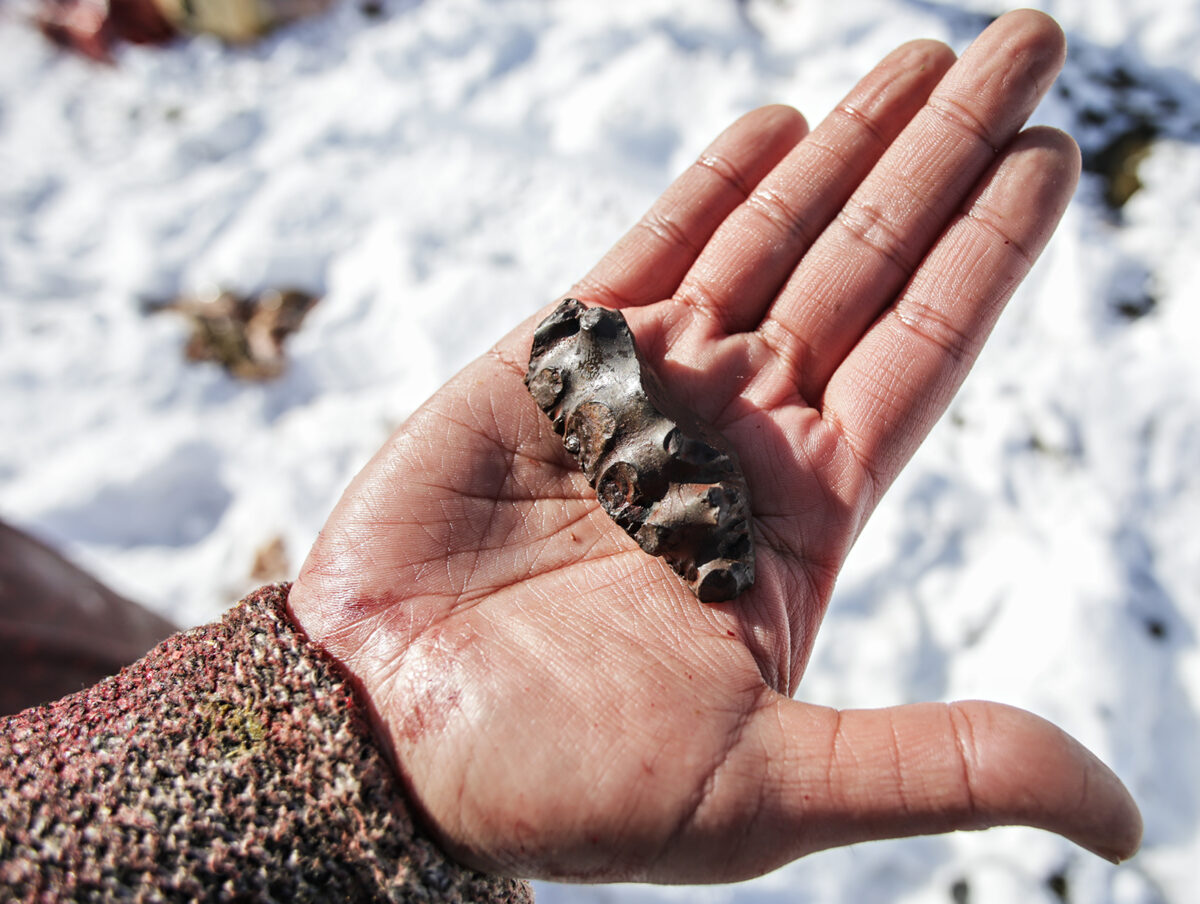
Edmo notes the kidney fat is particularly well-suited as a beauty product for the skin, and also for “feeding” buffalo rocks, or iniskim. Iniskim are chunks of ammonite fossils known to ride around in the pockets and on the dashboards of tribal members. The buffalo rocks are passed down through families. They keep the bearer safe and their cupboards full.
“We always pray for long life, happy life, a successful life,” says Edmo. “The success is being able to hunt, being able to come out in these conditions and being able to provide for your family.”
For more images, see the full gallery.